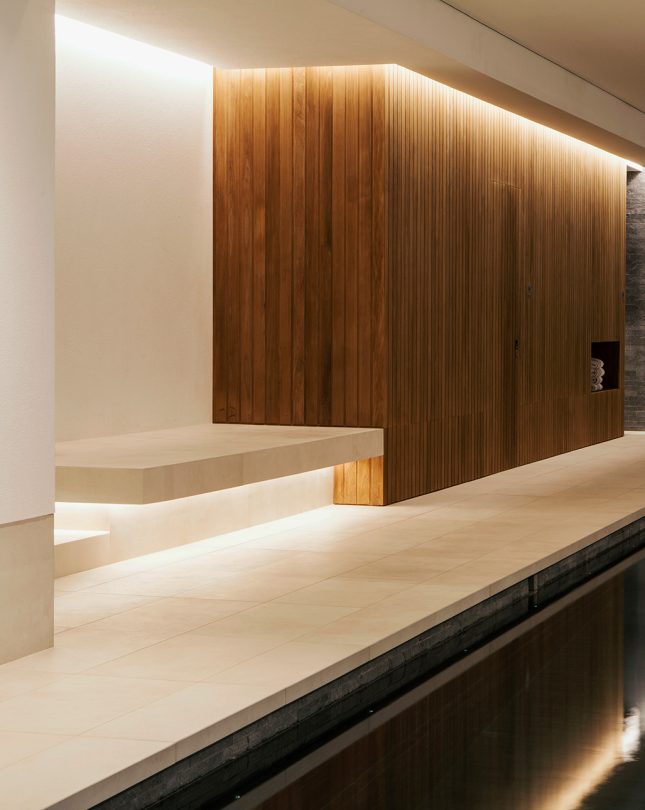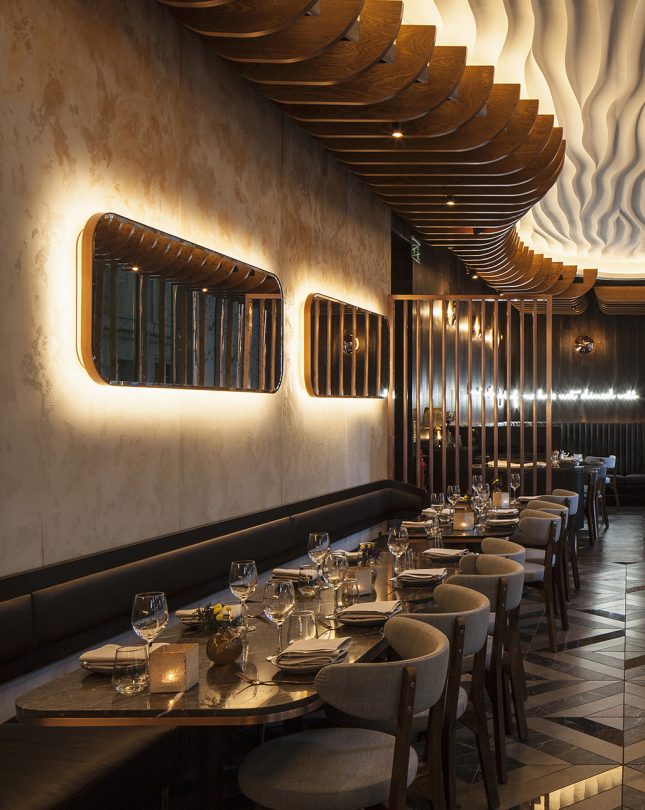Our latest news and views English
Underpinned by our Scandinavian design heritage, we bring you regular stories about architecture and interiors, exploring natural materials, acoustics, and the creation of safe and harmonious environments.

Paul Nulty has been involved in the business of design since graduating, with over 20 years experience working in architectural lighting. He believes that good lighting design is about the play of light and materials and the many ways that illumination can strike a surface and change the way we perceive an environment.
Combining his boyhood passions of science, maths, art, psychology and sociology, Nulty set up his lighting design studio in 2011. Here he gives us three thoughts on lighting and materials, considering the benefits of working with wood, balancing natural and artificial light, and the importance of Light Reflectance Values.
“You need to consider where you want to draw the eye and what elements you want to highlight; how you fine-tune the right colour temperature and colour rendition of the luminaire to emphasise the natural tone and properties of the wood,” he says,”Woods vary in terms of texture and grain. They also wear and shift in appearance over time. What’s going on either side of a piece of wood can also affect how we perceive it too.” The treatment of wood, whether varnished, stained or glossy is something to also bear in mind.
Luxury living in Mayfair at No. 1 Grosvenor Square.
Photo: James French


“We should always default to a daylight first approach because natural light offers a tangible link to the outside and supports health and wellbeing. In the absence of frequent exposure to natural light, we need to consider how much artificial light is required and then use layers of illumination to create a naturally balanced scheme, replicating daylight patterns where possible.”
A private residence in west London’s prestigious Notting Hill. Photo: James French.
Light Reflectance Values are a way of measuring the amount of visible and usable light that is reflected from a surface when illuminated by a light source. Nulty gives some context, “When light falls on any surface, the amount reflected will always be determined by the materiality of the surface. A black finish tends to absorb light more than a white finish, and the surface texture, be that a single hard surface or a multi-faceted soft surface, polished or rough, changes the reflectance value. The higher the value, the greater the level of reflectance.” This is important to bear in mind, in order to create a harmonious space, with the right amount of light and reflectance.
Lighting design by Nulty at a Haz restaurant.
Photo: James French
